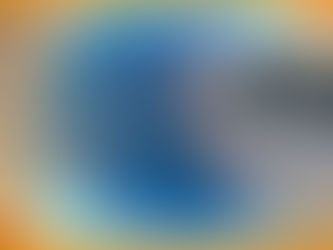M14 - Globular Cluster in Ophiuchus | Astrophotography Pictures and Tips
- Antoine & Dalia Grelin
- Aug 24, 2024
- 5 min read
Messier 14 is a globular cluster home to at least 150,000 stars, including 70 variables. The cluster can be found in the constellation Ophiuchus approximately 29,000 light-years away.
Object Designation: M14, NGC 6402
Constellation: Ophiuchus
Object Type: Globular Cluster
Distance: 29,000 light-years
Magnitude: 8.3
Discovery: Charles Messier in 1764
M14 is slightly elongated in shape, and is bright enough to be seen with binoculars and small telescopes. Being in Ophiuchus, it is a good early Summer astrophotography target and is overall easy to capture with a telescope.
M14 Astrophotography with a Refractor Telescope and Mono Camera
Mars 2024
We shot M14 for only three hours in total, using our SVX130 refractor telescope and QHY600M monochrome camera from dark desert skies. As you can see, three hours from a nice clean sky is enough to obtain a more-than-reasonable result.
M14 is bright with a decent size, although like it is the case for most globulars, it is best captured with a large telescope. The picture we got is slightly cropped and was taken at 655mm of focal length.
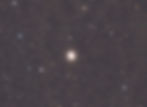
GEAR USED:
Camera: QHY600M
Telescope: Stellarvue SVX130
Mount: 10Micron GM1000 HPS
Accessories: Moonlite Nitecrawler focuser / Pegasus Astro Ultimate Powerbox
Processing: Pixinsight, with R-C Astro plugins. Final touches in Skylum Luminar Neo
ACQUISITION DETAILS:
Total Exposure Time: 3 hours
Exposure Time per frame: 30 seconds
Filters: Chroma 3nm R/G/B
Gain: 56
How to Find M14
Messier 14 can be found about 29,000 light-years away in the constellation Ophiuchus. It is the largest of the three popular globular clusters in this constellation (the other two being Messier 10 and Messier 12)
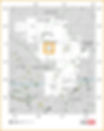
Messier 14 is fainter than M10 and M12, but thanks to its size can be seen not only with telescopes but also with a pair of binoculars.
You can spot M14 not too far from the edge of the constellation, on the side towards Serpens Cauda and Scutum. To find it, first look for the star Cebalrai.
Cebalrai (Beta Ophiuchi) is a bright star (magnitude 2.8), which can also be seen on the attached map, so it is easy to spot! From there, look for Sabik (Eta Ophiuchi), another bright star to the southeast. If you imagine a line connecting Cebalrai and Sabik, M14 lies a little closer to Cebalrai along this line.
The best time to observe and photograph the M14 Cluster is June.
Messier 14 Information
Messier 14 is a globular cluster believed to be about 13 billion years old. It is home to approximately 150,000 stars. So far, 70 stars within the cluster have been identified as variable stars.
Discovery
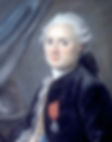
M14 was discovered on June 1st, 1764 by Charles Messier.
Messier originally noted that M14 was a "nebula without stars", and it was not until 1783 that individual stars were confirmed thanks to William Herschel.
In the original Messier catalog, the Messier 14 entry also reads: "This nebula is not large, its light is faint, one can see it nevertheless with an ordinary telescope of three feet and a half; it is round, near it is a small faint star of the ninth magnitude; its position has been determined by comparing it with Gamma of Ophiuchus".
Nova In Messier 14

A Magnitude +9.2 occurred in Messier 14 in the year 1938, but was not spotted for 26 years until astronomers compared photographic plates in 1964.
These photos were taken by Helen Sawyer Hogg, an American astronomer who imaged the cluster between 1932 and 1963 using a 72-inch reflector at the Dominion Astrophysical Observatory in British Columbia.
This nova is historically important as it was the first to ever be photographed, and the second to be found within a globular cluster (the first being the one in Messier 80 from 1860).
Messier 14 by the Hubble Space Telescope
NASA and ESA released an impressive picture of Messier 14 on March 20, 2023 taken by the Hubble Space Telescope. Hundreds of colorful stars can be seen, most of them being blue and orange.
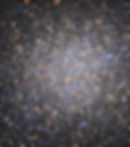
Unlike the bright and fuzzy core you see on pictures taken by amateur telescopes, this photo taken with the HST's insane aperture and resolution shows almost all stars even within the core!
Our Premium Astrophotography Course
Want to learn all aspects of astrophotography in the most efficient way possible?
The Galactic Course includes a membership that gives you unlimited access to all our astrophotography courses. Step into an ever-growing realm of knowledge and learn at your own pace. Make life-long friends and connections with other members, and get tips from instructors that truly care about your journey and progress under the night sky.
Single Shot and Processing M14
Messier 14 is easy to process. It is a globular cluster with nothing much going on in the vicinity. There are no nebulae, galaxies, or space dust to worry about during processing and you can simply focus your entire attention on the cluster! Processing a globular cluster is very quick and straightforward, so you should not have issues getting something pretty in the end.
Below you can see what a single 30-second shot of M14 looked like. This one was shot through the Blue filter.

Messier 14 FAQ
What is M14?
M14 is a globular cluster.
In which constellation is Messier 14 located?
M14 can be found in the constellation Ophiuchus.
How big is M14?
Messier 14 has an apparent size of about 11.7 arc-minutes, and a diameter of about 100 light-years.
How far is Messier 14?
M14 is believed to be between 29,000 and 30,300 light-years away from Earth.
How long should my exposure time be when photographing M14?
We recommend taking 30 to 60-second exposures if you want the cluster to look as crisp as possible.
Should I use a filter to image M14?
M14 is a globular cluster with no apparent HA, SII, or OIII within or around it, so image it without filters!
What equipment do I need to photograph M14?
You can capture this object with any telescope, but the larger instrument with higher aperture the better!
Final Thoughts
Messier 14 is a good globular cluster to capture if you're unsure what target to go after tonight! You can get good results in the just 2-3 hours of integration time and it is also very simple to process! If you have the patience, maybe try going deep on this target with dozens of hours of exposure time, and who knows, maybe you'll be able to see something more hidden around it!
Have you imaged M14? If so, upload your picture in the comments! We'd all love to see your work :)
Clear Skies,
Galactic Hunter
GALACTIC HUNTER BOOKS













